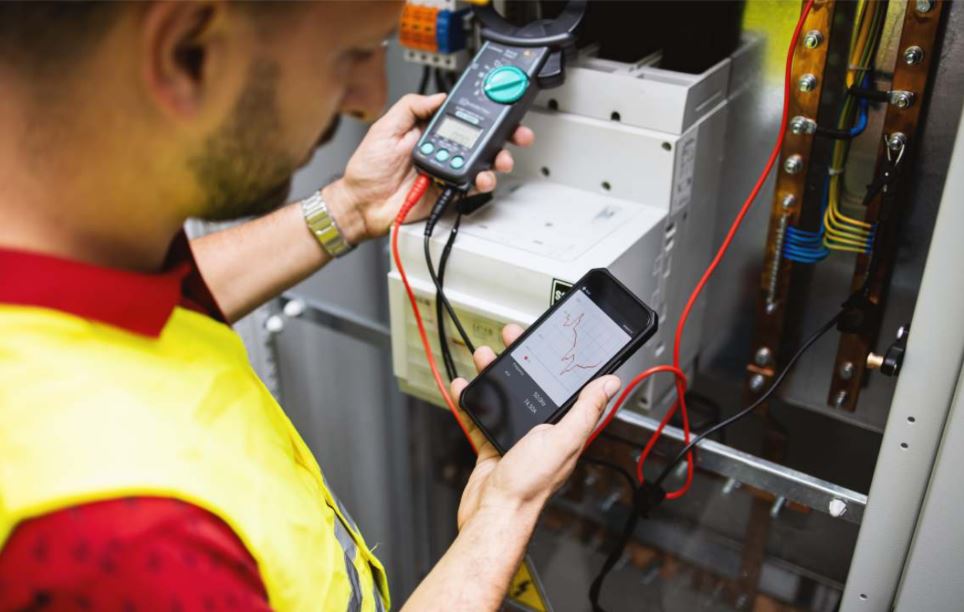
As our lives become more digital and interconnected, our reliance on electricity is ever-growing. The existing energy meters are however not adaptive providing effective monitoring, accurate measurement, billing and remote access control. Telecom operators can offer assistance in this regard with the aid of industrial cellular routers to help energy providers and consumers have a clear view of their energy consumption and expenses, such as deductions incurred or energy usage levels, frequency and voltage fluctuations. This way telecom operators and energy providers can detect shady credit transactions, energy theft attempts and defective meter units for taking corrective action.
Autonomous prepaid energy meters using IoT Based Smart ELECTRIC METER is a cutting-edge solution that combines the power of IoT and prepaid metering to provide an efficient and reliable way to manage energy consumption. The solution leverages Long Range Wide Area Network (LoRaWAN) technology to enable real-time monitoring and control of energy consumption. In this case study, we will explore the challenges, solution, implementation, and conclusion of this innovative technology, SMART ELECTRIC METER USING LORA.
The benefits of cellular technology offer a strong opportunity for telecom operators to support energy providers to deploy smart solutions. Telecom operators can provide an array of key services such as connectivity to more sophisticated customer interfaces and delivering messages to subscribers.
Challenges
Traditional energy metering systems have several limitations, such as limited data accuracy, lack of real-time monitoring, and high maintenance costs. The introduction of autonomous prepaid energy meters using LoRaWAN technology addresses these challenges by providing a reliable, cost-effective, and efficient way to monitor energy consumption. However, the implementation of this technology comes with several challenges, such as:
Limited Network Coverage: The LoRaWAN network coverage is still limited, which may affect the reliability of the energy metering system.
Data Security: The system collects sensitive data, such as energy consumption, which requires a high level of data security to prevent unauthorized access.
Integration with Existing Systems: The system needs to integrate with the existing energy infrastructure, which may pose technical challenges.
Solution & Implementation using IoT Based Smart ELECTRIC METER

To address the challenges mentioned above, several solutions can be implemented. Firstly, the LoRaWAN network coverage can be improved by expanding the network infrastructure. Secondly, data security can be improved by implementing advanced security protocols such as AES encryption. Finally, the integration with existing systems can be achieved by developing APIs and protocols that enable seamless data exchange between the energy metering system and existing infrastructure.
The implementation of the Autonomous prepaid energy meters involves several steps, such as:
Network Deployment: The LoRaWAN network infrastructure needs to be deployed in the area of operation to enable real-time communication between the energy meters and the central management system. To address the challenges mentioned above, several solutions can be implemented. Firstly, the LoRaWAN network coverage can be improved by expanding the network infrastructure. Secondly, data security can be improved by implementing advanced security protocols such as AES encryption. Finally, the integration with existing systems can be achieved by developing APIs and protocols that enable seamless data exchange between the energy metering system and existing infrastructure. Meter Installation: The autonomous prepaid energy meters need to be installed in the customer's premises to monitor their energy consumption. These meters are equipped with a LoRaWAN communication module, which enables them to communicate with the central management system.
Central Management System: The central management system is responsible for collecting data from the energy meters, managing customer accounts, and generating bills. The system should also have a user - friendly interface that enables customers to monitor their energy consumption and recharge their prepaid accounts.
Integration with Existing Infrastructure: The system needs to be integrated with the existing energy infrastructure, such as the billing system and grid management system. This integration enables seamless data exchange between the energy metering system and the existing infrastructure.
Through the new IoT-based solution we can hit the goals below:
- Optimize the operations with higher efficiency and Improve service quality to his customers.
- Smartly manage the expenses with visibility from top to bottom.
- Reduce the human resources to read data automatically.
Macnman’s industrial IoT Based Smart ELECTRIC METER allows data such as AC mains, energy usage, and door status to be read through the Digital Input/Output interface and published remotely on a platform using MQTT protocol over a wireless LTE connection. This two-way communication enables commands from the monitoring center to be sent and received by the organization. In cases where illicit activity is taking place - for example, a thief attempting to steal battery packs or an energy bill that is not in keeping with usage - an alarm will be triggered, alerting the remote administrator via SMS, email or mobile push, or any combination of these.
Benefits of Smart Electricity Metering
- Zero Downtime: Sends notification and estimation before the meter runs out of credit.
- Optimized Service: Recharges hot meters before running out of credit
- Effective identification: Detects the faulty meter or electrical power theft
- Alert: Alerts when AC mains go above or below threshold settings
- Interactive management: Status is visible in the dashboards with different colour coding on the severity of alerts.
Application of data science possibilities with the data flowing in over a period of time.
Conclusion
Autonomous IoT Based Smart ELECTRIC METER is a game-changer in the energy metering industry. The technology provides several benefits, such as real-time monitoring, improved data accuracy, and cost- effective metering. Although the implementation of the technology comes with several challenges, these challenges can be addressed by improving the network coverage, implementing advanced security protocols, and developing APIs and protocols that enable seamless integration with existing infrastructure. Overall, the benefits of the technology outweigh the challenges, making it an ideal solution for managing energy consumption.